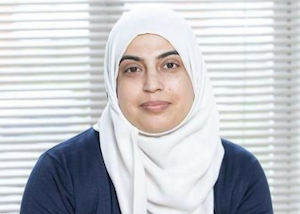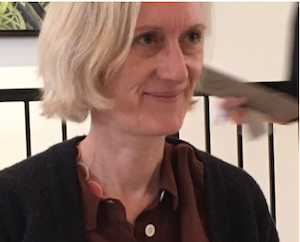Trees and Us: Learning About/From Trees and Treescapes From Primary School Children in the United Kingdom
by Samyia Ambreen, Khawla Badwan, and Kate Pahl
Thinking About Trees and Treescapes With Children in Schools
The contemporary literature on environmental education calls for active participation of children and young people in research (Rousell & Cutter-Mackenzie-Knowles, 2020). The goal is to embed science in children’s lives rather than to implement didactic environmental learning programs and teach about climate change in the abstract (Trott & Weinberg, 2020) because it is believed that such programs are not useful in helping children understand the environmental crisis. At the same time, challenging adult-designed methods and methodologies, the focus is on emergent modes of inquiry that enable children to take the lead in producing knowledge about their environments. This child-centered approach emphasizes the embodied experiences of children to help them reimagine what science could mean to them in their daily lives (Ojala, 2012).
In our “Voices of the Future” project [NE/V021370/1] funded by the UK Research and Innovation (UKRI) funding council and the Natural Environment Research Council (NERC), we worked with young children in primary schools in the North West of England to investigate the opportunities and benefits that treescapes offer children, as well as the drawbacks of treescapes. We hypothesize that meaningful engagement with treescapes supports education and fosters a sense of belonging and hope among children (Ojala, 2012). Co-production is at the heart of the project; it involves children as co- creators of knowledge (Pahl & Pool, 2021) and offers fresh perspectives and insights into urban and rural treescapes, their importance for human and more-than-human lives, and the role that trees and treescapes can play in mitigating the climate crisis. We are inspired by developments in knowledge about children and childhood that view children as active citizens of society and the educational community (Tisdall, 2012). We view children as both being and becoming, with experiences, views, ideas, and perspectives that are worthy of studying in their own right (Christensen & Prout, 2005).
 Samyia Ambreen is a research associate in the Education and Social Sciences Research Institute (ESRI) at Manchester Metropolitan University. Her research interests include understanding children’s interactions through a participatory research design, with a focus on ethnicity and cultural diversity. She is also interested in hope, children’s spirituality, and care toward the environment.
Samyia Ambreen is a research associate in the Education and Social Sciences Research Institute (ESRI) at Manchester Metropolitan University. Her research interests include understanding children’s interactions through a participatory research design, with a focus on ethnicity and cultural diversity. She is also interested in hope, children’s spirituality, and care toward the environment.
 Khawla Badwan is reader in TESOL and applied linguistics at Manchester Metropolitan University. Her interdisciplinary work brings together expertise in intercultural communication, literacy debates, language education, language and climate change education, language and social justice, language and identity, and sociolinguistics of globalization. Her most recent school-based research projects include the “Voices of the Future” project funded by the Natural Environment Research Council and the “Children’s Sociolinguistics” project funded by Manchester Metropolitan University.
Khawla Badwan is reader in TESOL and applied linguistics at Manchester Metropolitan University. Her interdisciplinary work brings together expertise in intercultural communication, literacy debates, language education, language and climate change education, language and social justice, language and identity, and sociolinguistics of globalization. Her most recent school-based research projects include the “Voices of the Future” project funded by the Natural Environment Research Council and the “Children’s Sociolinguistics” project funded by Manchester Metropolitan University.
 Kate Pahl is professor of arts and literacy at Manchester Metropolitan University. Her work is concerned with literacy and language practices in communities. She is the author, with Jennifer Rowsell, of Living Literacies (MIT Press 2020). She is currently the Principal Investigator of “Voices of the Future,” a three year project funded by the Natural Environment Research Council (NERC) exploring the relationship between children and young people and treescapes.
Kate Pahl is professor of arts and literacy at Manchester Metropolitan University. Her work is concerned with literacy and language practices in communities. She is the author, with Jennifer Rowsell, of Living Literacies (MIT Press 2020). She is currently the Principal Investigator of “Voices of the Future,” a three year project funded by the Natural Environment Research Council (NERC) exploring the relationship between children and young people and treescapes.